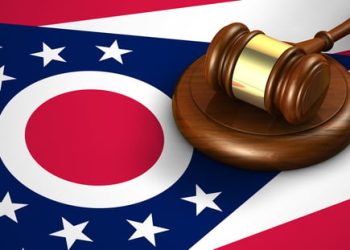
U.S. Supreme Court docket
Though they didn’t obtain the headlines of probably the most high-profile choices of the October Time period 2022, the U.S. Supreme Court docket determined two necessary circumstances regarding the regulation of the office. One concerned the responsibility of employers to accommodate workers’ spiritual beliefs and practices. The opposite involved when a union might be held answerable for the financial penalties of a strike. Every is more likely to engender a substantial amount of litigation.
Employment discrimination
Title VII of the 1964 Civil Rights Act prohibits employment discrimination based mostly on race, intercourse or faith. With regard to faith, the Equal Employment Alternative Fee has interpreted Title VII to imply that employers should make “‘affordable lodging to the spiritual wants of workers’ each time that might not work an ‘undue hardship on the conduct of the employer’s enterprise.’” The essential questions then are what constitutes “affordable lodging” and what an “undue hardship” is.
In Trans World Airways Inc. v. Hardison, in 1977, the Supreme Court docket articulated the usual for figuring out this. It mentioned employers wouldn’t have to bear greater than a “de minimis value” to accommodate workers’ spiritual practices. In different phrases, whether it is greater than a minimal value to the employer, its failure to supply an lodging doesn’t violate Title VII.
In Groff v. DeJoy, determined June 29, the court docket rejected this normal and adopted a brand new one, which is way more protecting of workers’ spiritual freedom. Gerald Groff works for the US Postal Service. He’s an evangelical Christian who says his faith requires that he use his Sunday Sabbath for worship and relaxation. After the postal service entered into an settlement with Amazon to make Sunday deliveries, Groff was amongst those that was advised he would want to work Sundays on a rotating foundation.
Groff refused to take action, resigned after which sued the postal service beneath Title VII. The decrease courts dominated in opposition to Groff, utilizing the usual from TWA v. Hardison and concluded that accommodating Groff’s spiritual beliefs would impose greater than a minimal burden on the postal service.
The Supreme Court docket in a unanimous choice reversed the decrease courts. Justice Samuel Alito wrote for the court docket, stating: “We maintain that displaying ‘greater than a de minimis value,’ as that phrase is utilized in widespread parlance, doesn’t suffice to determine ‘undue hardship’ beneath Title VII.” This can be a clear rejection of the usual that has been adopted for the final 45 years.
However the query then turns into, what’s the new authorized normal? The court docket declared: “We expect it is sufficient to say that an employer should present that the burden of granting an lodging would end in substantial elevated prices in relation to the conduct of its explicit enterprise.”
This can be a large change within the regulation. Since 1977, employers haven’t had to supply an lodging if it was greater than a minimal burden; now they need to accomplish that except it might incur a considerable value. The essential situation will likely be how courts are to resolve what an insubstantial value is in order that employers should present the lodging or resolve what a considerable value is in order that they don’t. However the court docket offers little steerage to decrease courts and litigants. There will likely be much more fits, and undoubtedly, it is going to take time for the courts to make clear how the brand new normal is to be utilized and the way the definition of a considerable value within the totality of the circumstances will likely be decided.
Labor regulation
When can a union be held answerable for the financial penalties of a strike? On the one hand, union members wouldn’t have the appropriate to destroy an employer’s property as a part of a strike. Nobody contends {that a} strike entails a proper to throw bricks by way of the employer’s home windows or set the office on hearth. Alternatively, nearly all strikes impose prices. That’s precisely why they’re an efficient and important labor software. If unions have been answerable for all the prices ensuing from their strikes, no unions ever would be capable of strike.
The authorized situation arises as as to if the Nationwide Labor Relations Act, which protects the appropriate of unions to strike, preempts state tort legal responsibility for the financial penalties of a strike. There may be additionally the query of what the function of the Nationwide Labor Relations Board is in figuring out whether or not the appropriate to strike is protected in a specific scenario and the function it performs in courts adjudicating tort fits.
These points have been offered in Glacier Northwest Inc. v. Worldwide Brotherhood of Teamsters Native Union No. 174. The case concerned a strike by cement truck drivers in Washington state. That they had picked up their vehicles on the morning of the strike and had begun driving them to their job websites. When the drivers started the strike that morning, they returned the vehicles to their employer and left the drums turning so the vehicles wouldn’t be broken. However as a result of the employer had chosen to not train its proper to rent substitute employees or use nonstriking employees to ship and pour the concrete, the concrete was ruined.
Glacier Northwest sued the union for damages for the lack of the concrete. The Washington Supreme Court docket concluded that state tort legal responsibility was preempted by federal regulation. It dominated in favor of the union, rejecting legal responsibility for the “claims associated to the lack of its concrete product as a result of that loss was incidental to a strike arguably protected by federal regulation.”
However the Supreme Court docket reversed in an 8-1 choice June 1, with Justice Amy Coney Barrett writing for almost all and solely Justice Ketanji Brown Jackson dissenting. The court docket burdened that “[t]he drivers engaged in a sudden cessation of labor that put Glacier’s property in foreseeable and imminent hazard.” The court docket mentioned the drivers’ motion ruined the concrete and risked severe hurt to the vehicles.
The central situation earlier than the court docket was whether or not the Nationwide Labor Relations Act, which protects the appropriate of workers to strike, precludes a state court docket from imposing legal responsibility on a union for the financial penalties of a strike. In 1959, in San Diego Constructing Trades Council v. Garmon, the Supreme Court docket dominated that state court docket proceedings needs to be paused to permit the Nationwide Labor Relations Board to find out whether or not the union’s conduct was or was not protected or prohibited by the Nationwide Labor Relations Act.
This method permits a federal company, vested with authority by Congress and with its personal experience, to make the edge dedication of whether or not the strike is protected or prohibited by federal regulation. Certainly, the Nationwide Labor Relations Board is within the midst of a factual investigation to find out whether or not federal regulation protects the strike carried out by these cement employees.
However the Supreme Court docket didn’t observe the process of permitting the Nationwide Labor Relations Board to make the preliminary dedication of whether or not the strike was protected by federal regulation. The excessive court docket determined the difficulty for itself, concluding that the drivers didn’t do sufficient to make sure the cement wouldn’t harden and that the strike was not even arguably protected by federal regulation.
The court docket acknowledged prior circumstances the place employers misplaced perishable merchandise because of a strike —similar to poultry, milk and eggs—however legal responsibility for the union was rejected. Justice Barrett mentioned these circumstances are distinguishable: “By reporting for responsibility and pretending as if they’d ship the concrete, the drivers prompted the creation of the perishable product. Then, they waited to stroll off the job till the concrete was blended and poured within the vehicles. In so doing, they not solely destroyed the concrete but in addition put Glacier’s vehicles in hurt’s method. This case due to this fact entails way more than ‘a piece stoppage at a time when the lack of perishable merchandise is foreseeable.’”
This case is necessary as a result of it articulates a take a look at for when unions might be held answerable for the financial penalties of a strike: when there’s “a threat of foreseeable, aggravated and imminent hurt.” However it’s unclear how that will likely be utilized. All strikes (and employer lockouts) pose a “foreseeable” hazard of hurt. The strike by graduate college students on the College of California in 2022 meant that some college students didn’t get their grades on time, which could have damage their employment prospects. The writers’ strike in Hollywood will result in financial hurt to studios, caterers, actors and set builders. Lockouts in skilled sports activities have resulted within the cancellation of video games and losses to gamers, TV networks and peanut distributors.
The query will likely be the place the road will likely be drawn as to when unions might be sued for damages. A slender studying of the choice, which is certain to be urged by unions, is that the cement employees’ conduct was akin to throwing a brick by way of the employer’s window. It was intentional destruction of property and due to this fact not protected by the Nationwide Labor Relations Act. A broad studying of this ruling, positive to be urged by administration, is that this choice considerably expands the legal responsibility of unions when their strikes trigger hurt. Finally, the court docket might want to resolve sooner or later methods to decide what “a threat of foreseeable, aggravated and imminent hurt” is.
Erwin Chemerinsky is dean of the College of California at Berkeley College of Regulation and creator of the newly printed e-book A Momentous Yr within the Supreme Court docket. He’s an professional in constitutional regulation, federal follow, civil rights and civil liberties, and appellate litigation. He’s additionally the creator of The Case In opposition to the Supreme Court docket; The Faith Clauses: The Case for Separating Church and State, written with Howard Gillman; and Presumed Responsible: How the Supreme Court docket Empowered the Police and Subverted Civil Rights.
This column displays the opinions of the creator and never essentially the views of the ABA Journal—or the American Bar Affiliation.







